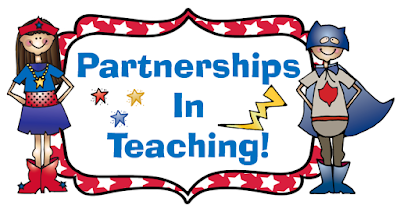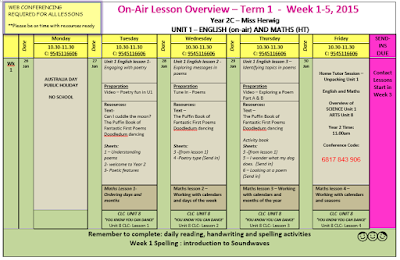As the new school year quickly approaches, as with any early years teacher in Australia, my thoughts have turned to those first day activities which help you to build a safe and secure learning environment for your students as well as help you gather some information about their abilities. But what happens when you don't have your students in the room with you and in some instances you won't meet them face to face for another 5-6 weeks, if at all?
As I would have done on the coast, I mail out a letter introducing myself to my students and letting them know a little about who I am. I have found this is rather important over the years when you are a very solid, 6ft tall person with strangely coloured hair and glasses. The odds of them crying by them time they have scanned to the top of my head are usually pretty good. I've learnt to get over it and now have very bad knees from kneeling all the time. Working at Distance Ed also means the parents and home tutor also get an introductory letter and an invitation to call or email me at anytime with their questions or concerns.



Then, this is where you turn to the rusty old video camera, or iPad for those younger readers of this blog, and prepare yourself for eternal embarrassment! I still have my first day of school stories, craft and writing tasks, its just that I tape myself reading and presenting them and put them on a USB stick before mailing them out to my students in their first mailbag of the year. In some cases they will receive this after their first on-air lesson with me but there isn't much you can do about snail mail in the outback.
This year my getting to know you learning tasks are set around the story 'I like myself' by Nancy Cartwright. After reading the book we then move onto the 'All About Me' graphic organiser and the self-portrait. The self-portrait can be drawn, painted or collaged. The home tutors then mail these back to me and after reading I include them in a school wall display. that is photographed for the school newsletter, and then kept in their portfolio.
(Please note video won't show on mobile devices)


As with students everywhere some children at Distance Ed are reluctant to begin their school year. Whether this be from anxiety or a desire to be outside working on the property with their parents you as the teacher need to find a way to engage them. This year I am using monsters and in particular the book 'Glad monster, Sad Monster' by Ed Emberley and Anne Miranda to build a positive attitude in my students about the classroom.
(Please note video won't show on mobile devices)
I prompt the children into discussing their emotions about school by yet again recording myself reading the story. Now of course I am not hearing what their answers are but by asking the questions I have hopefully triggered a thought process which may then continue over into meal time where they can discuss it with their home tutors or parents. Next we have fun! In their mailbag each student gets the template and craft materials to create a name monster. This activity allows me to also identify each students' cutting ability without using a formal assessment template. I ask the home tutors to take a photo of their child with the monster and email it into me as I then put it up on my cubicle wall and use it for the front cover of their portfolios. At this time I also get a writing sample from the children by having them write about how they are feeling about starting school and why. This writing sample allows me to see each child's letter formation, sentence structure, spelling strategies and word bank in a fun and hopefully unintimidating way. This sample is also added to student portfolios so students and parents can see the progression in their writing from the beginning of the year to the end of the year.
Thanks for stopping by. My next post will be about establishing expectations for both students and parents and goal setting. Till then,











